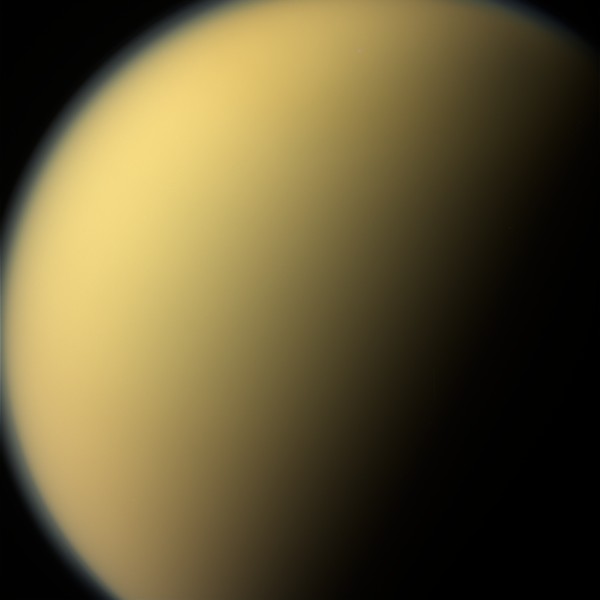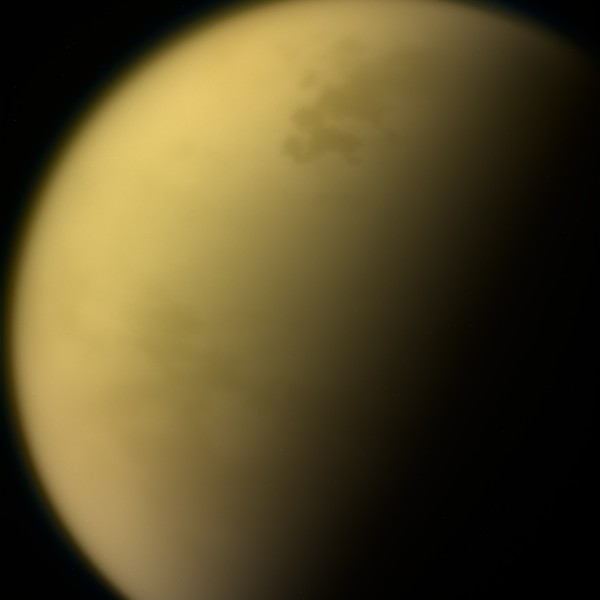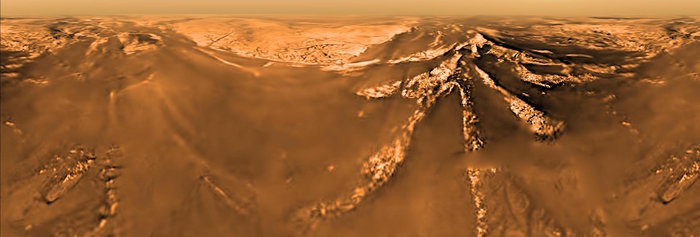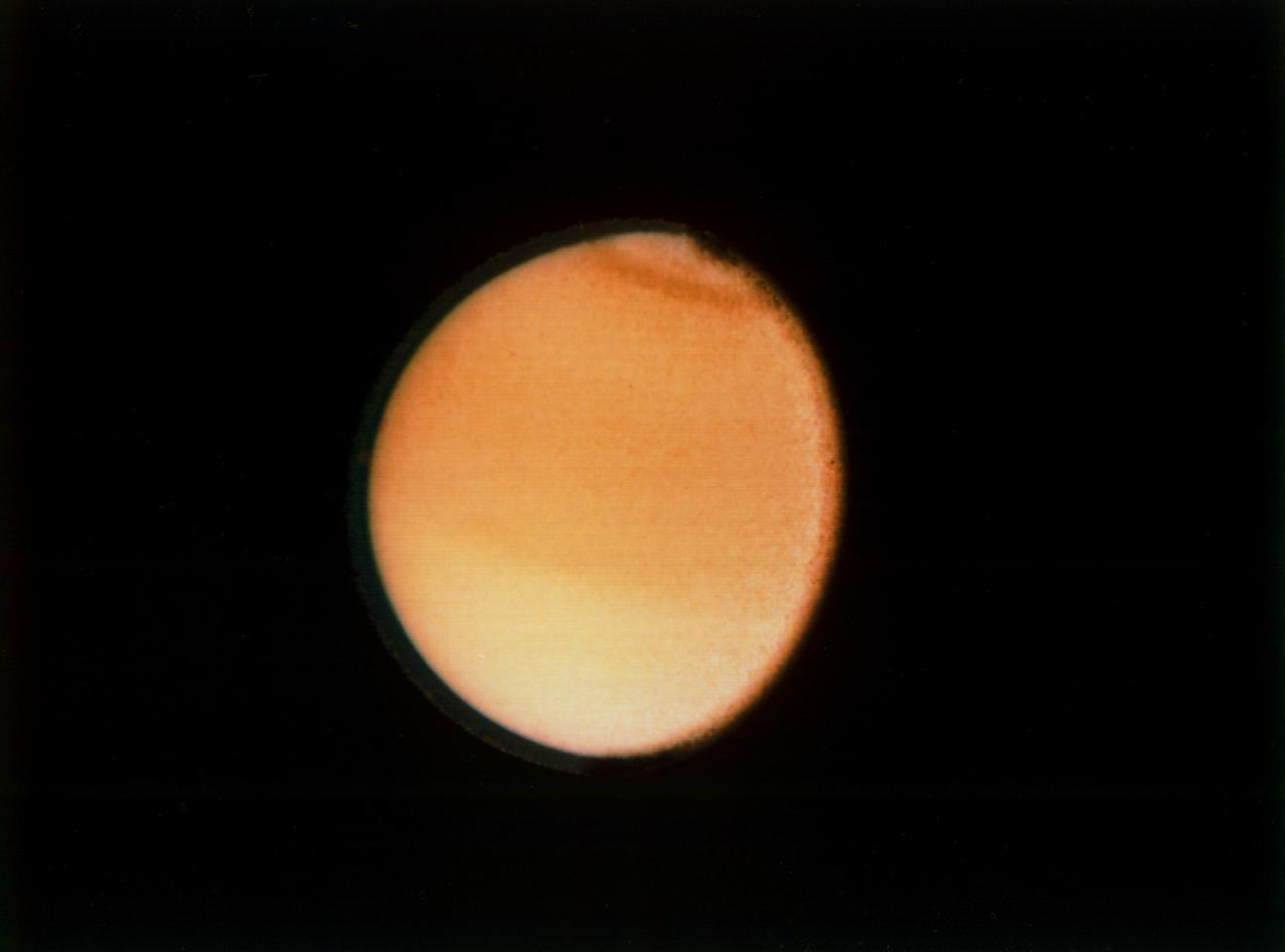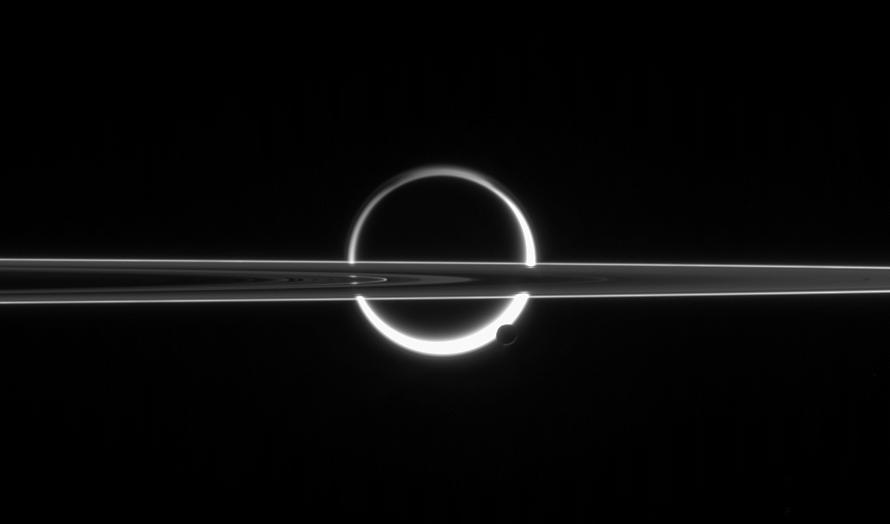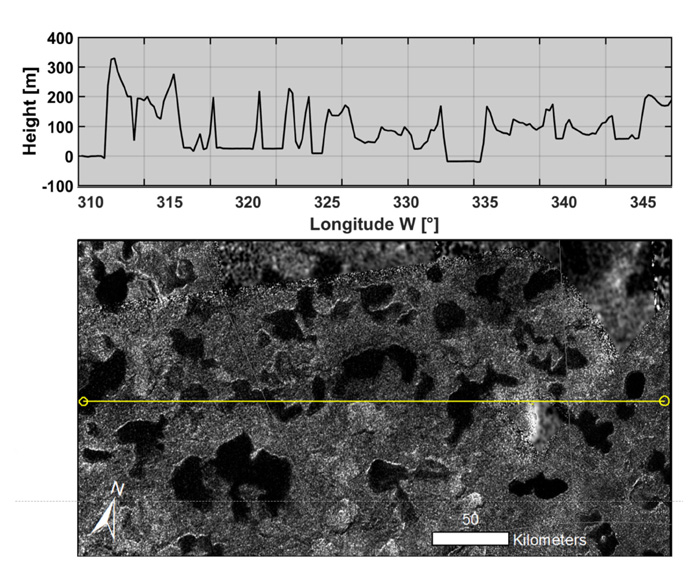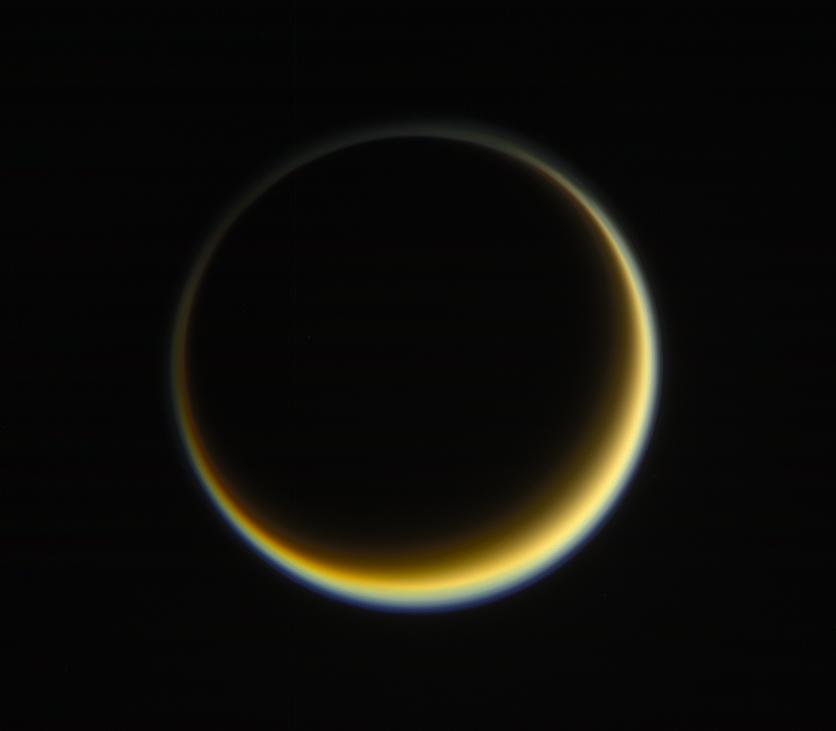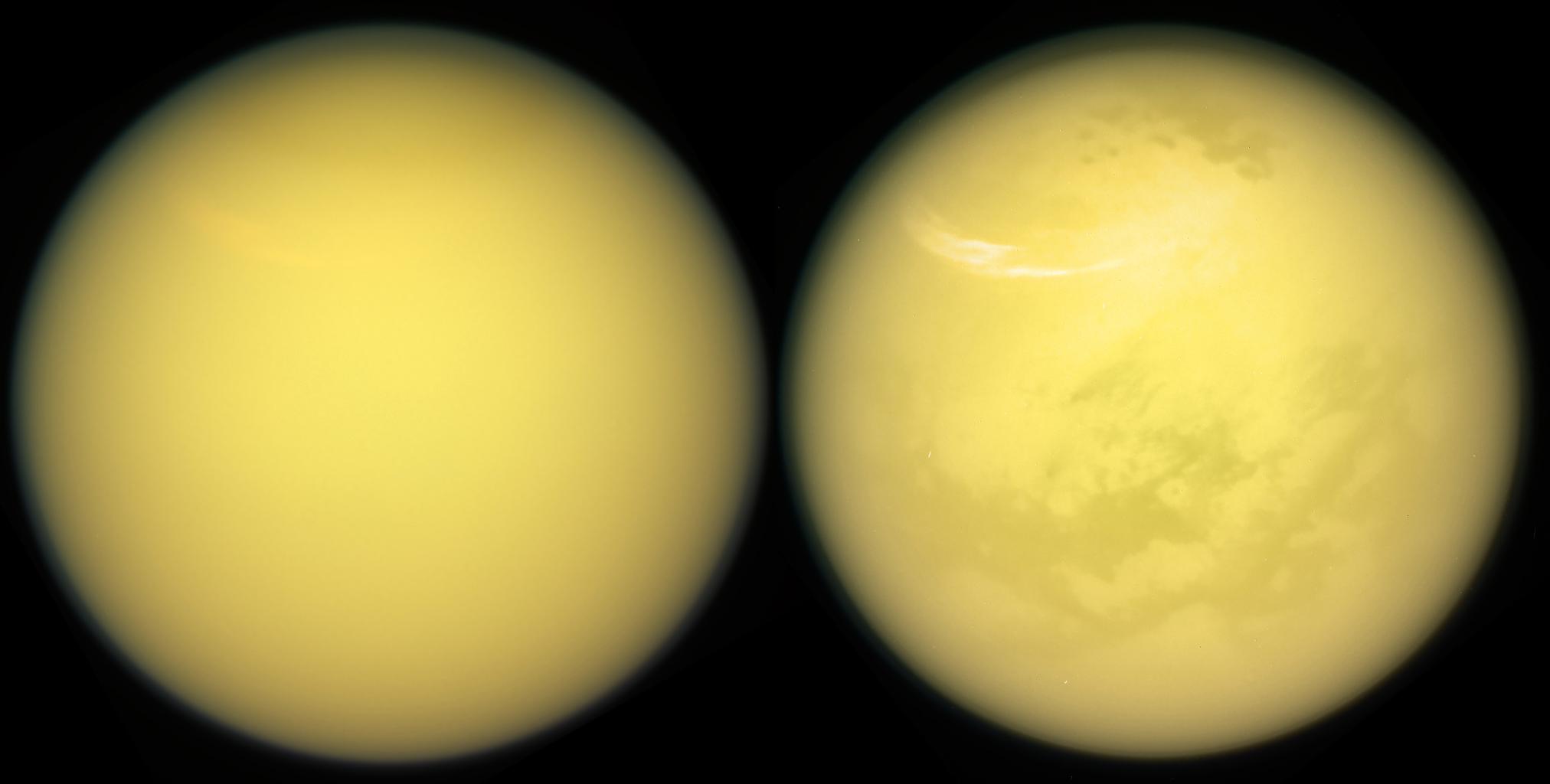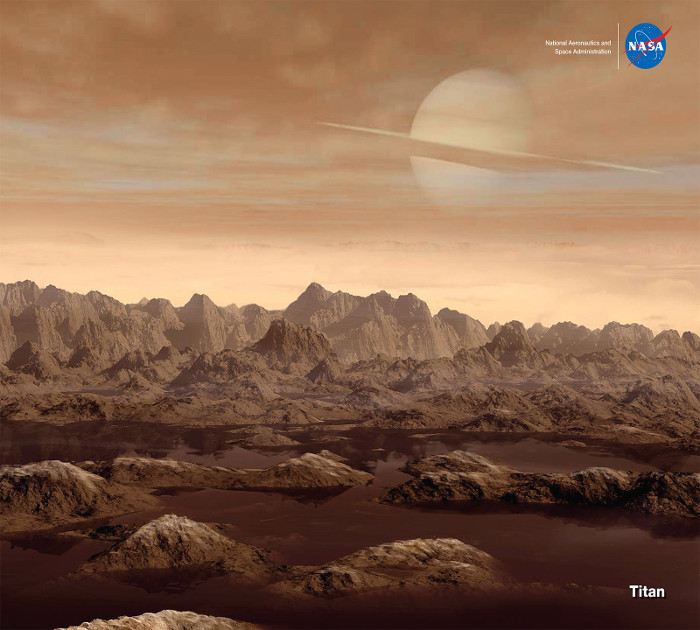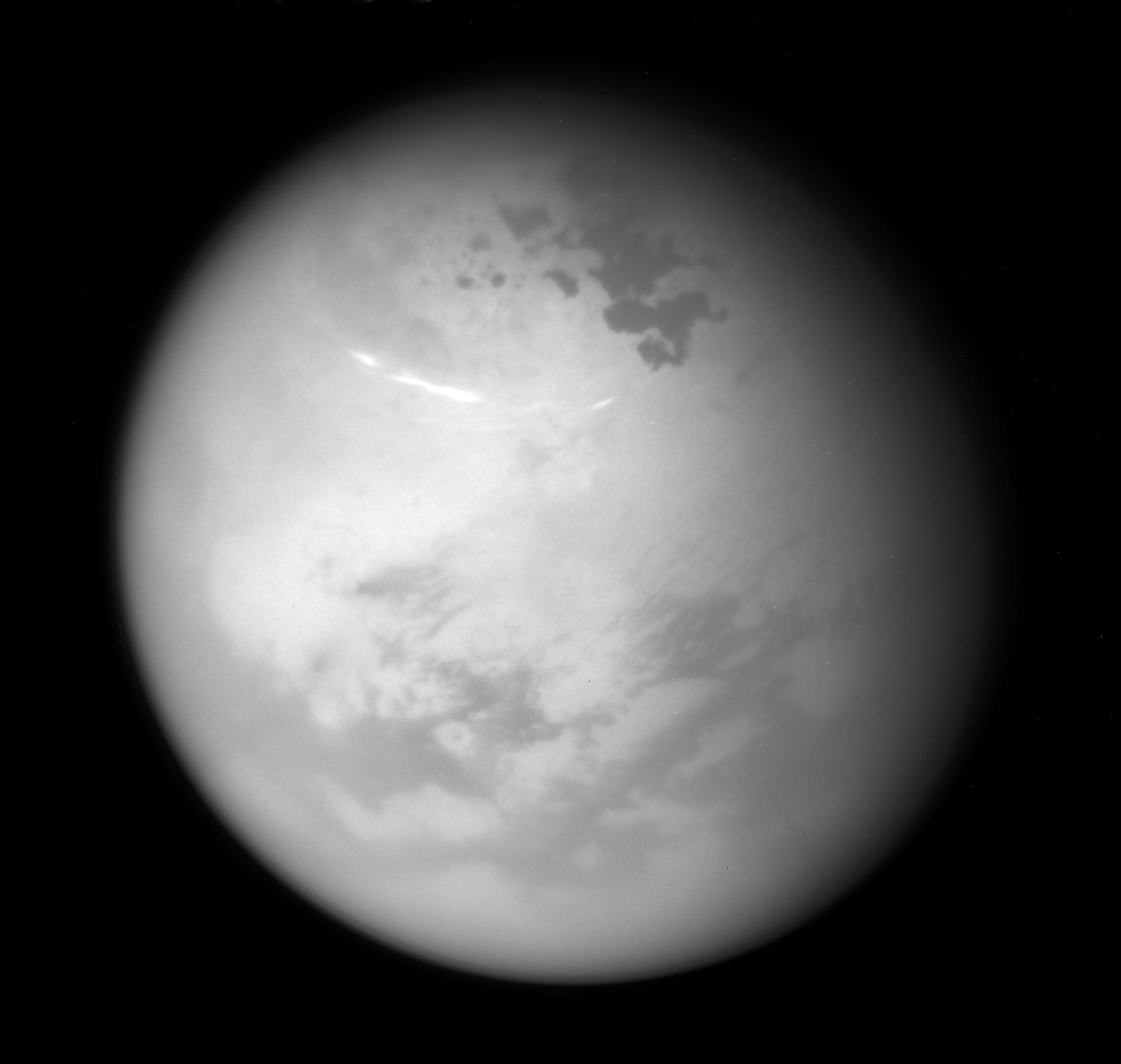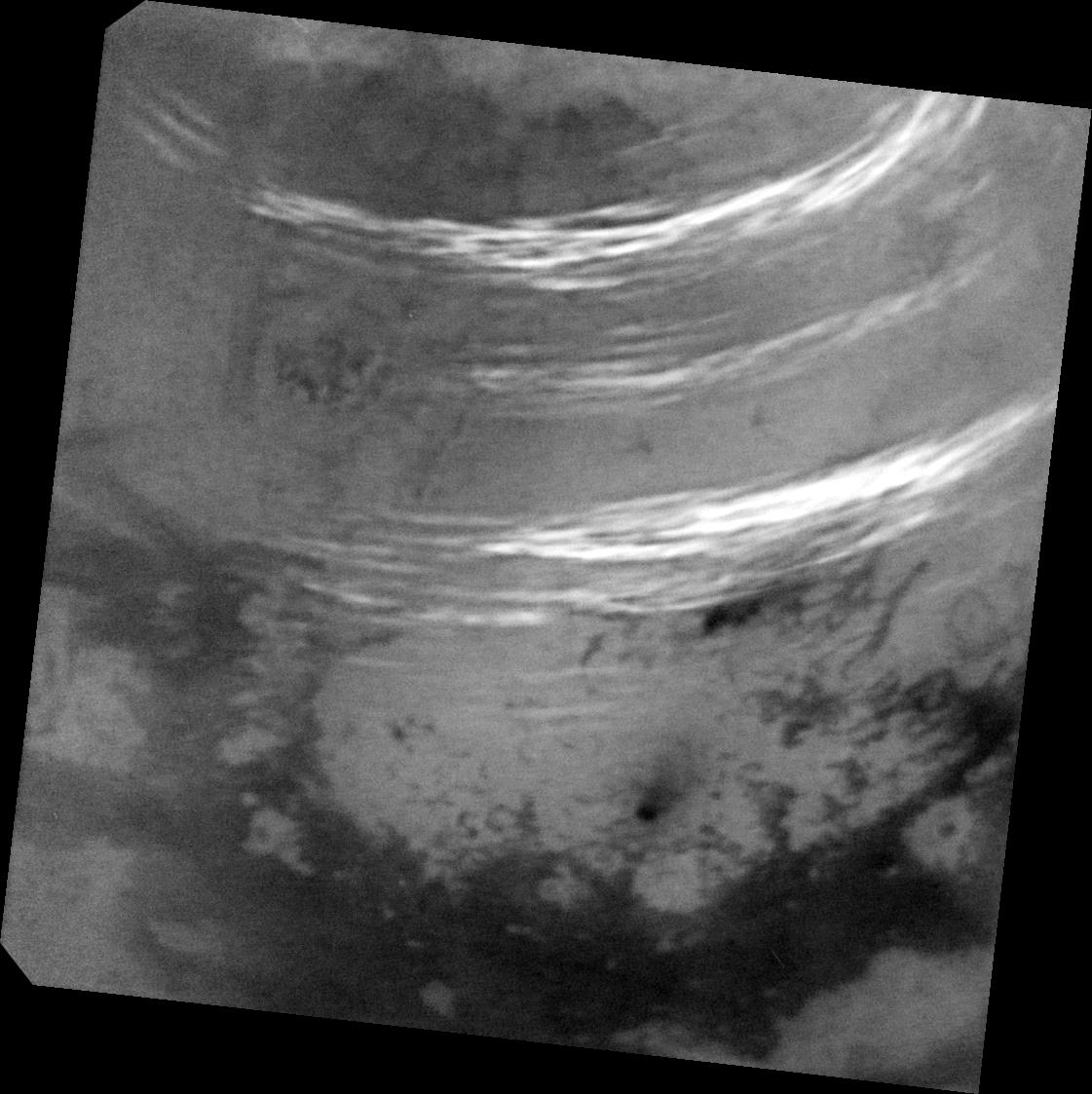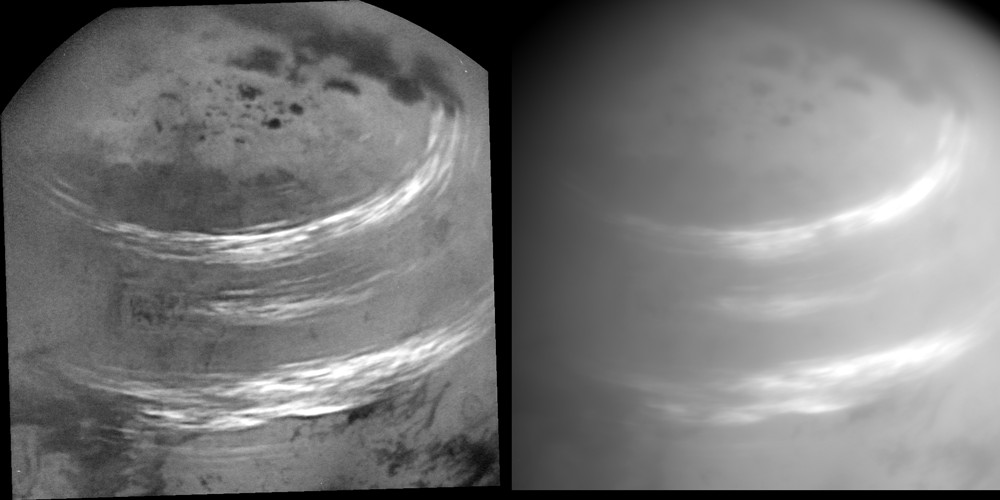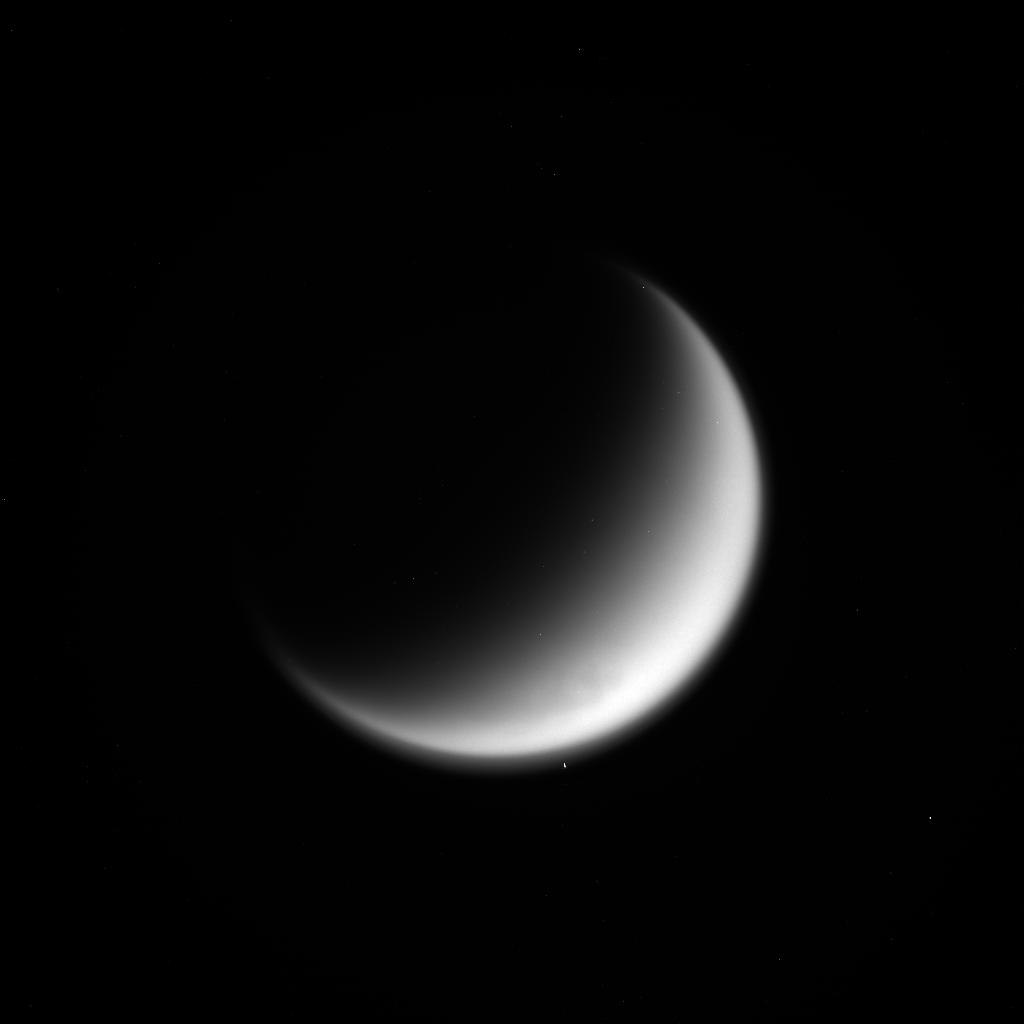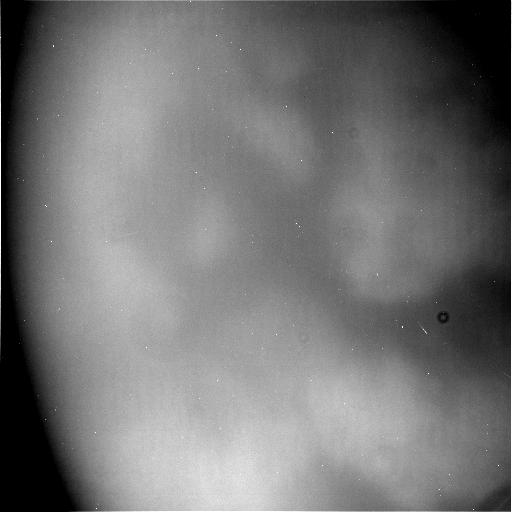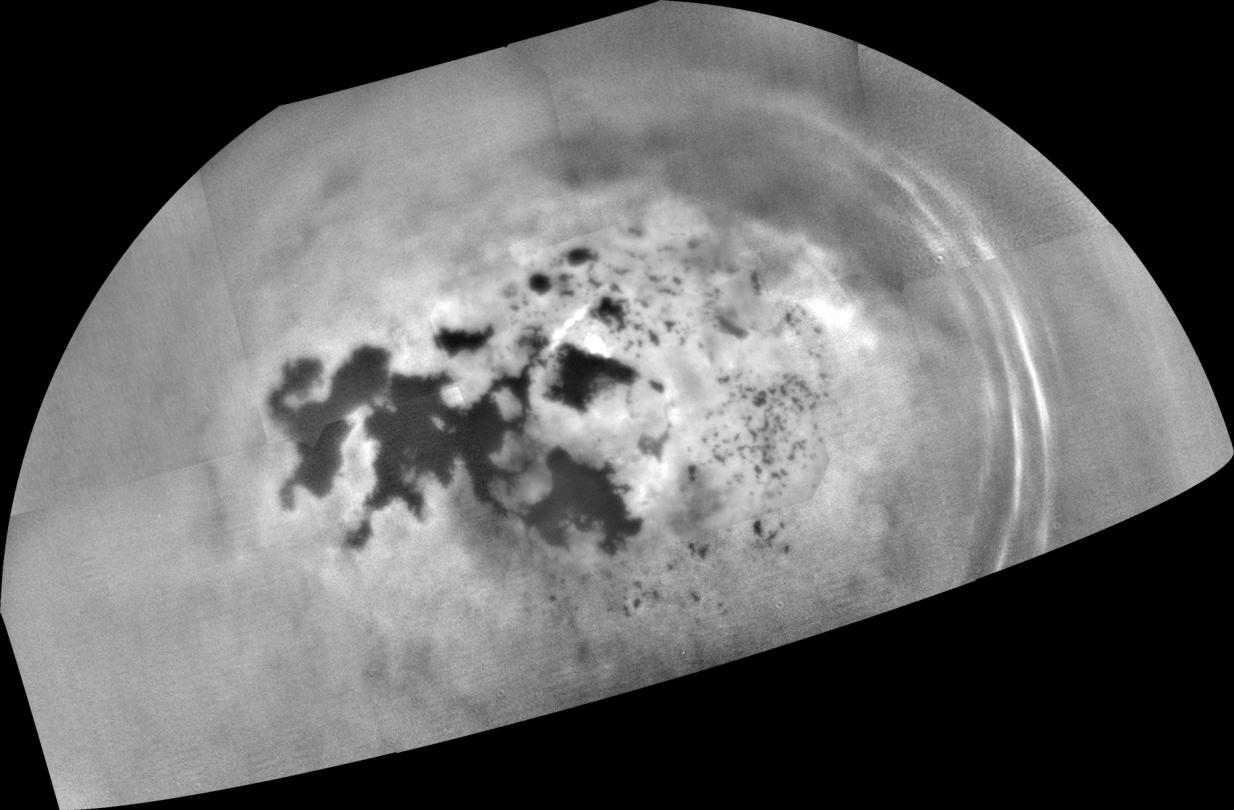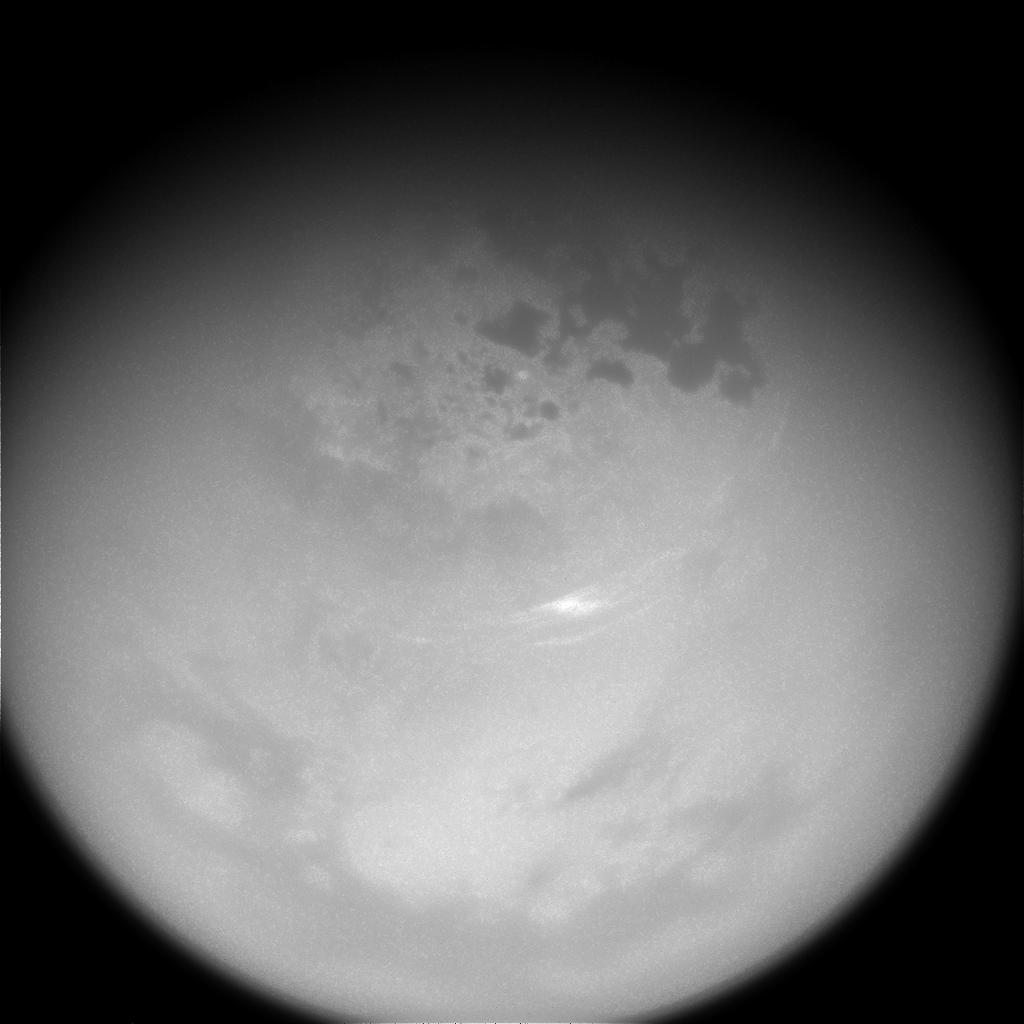| The image above shows Saturn's tiny moon Epimetheus, the
A and F rings of the Gas Giant as well as the Hazy Moon Titan beyond the
rings and Epimetheus. Epimetheus is far from being spherical since it is
only 116 kilometers or 72 miles across. Titan is by far the largest moon
of Saturn with a diameter reaching approximately 5,150 kilometers or 3,200
miles. The view clearly reveals the Encke gap in the A ring. The Encke gap
appears to be 325 kilometers or 200 miles wide. The Encke gap hosts, in
particular, the tiny moon Pan which is 26 kilometers or 16 miles across.
Features related to the small body can be noticed here. A couple of bright
clumps can be identified as well in the F ring. The image was obtained with the Narrow-Angle Camera of the Cassini spacecraft on August 28, 2006 at a distance of about 667,000 kilometers or 415,000 miles from Epimetheus and 1.8 million kilometers or 1.1 million miles from the Opaque Moon Titan. The illuminated side of the rings shows their beauty in this photo. The color data are artificial in this view. However, the color data, here, are close to what the human eyes would see since the color information is based on red, green and blue views captured at almost the same time and phase angle as the clear filter photo. The color data were overlaid onto the previously released clear filter view in order to be as close as possible to reality in terms of colors. Image Credit: NASA/JPL/Space Science Institute. |

